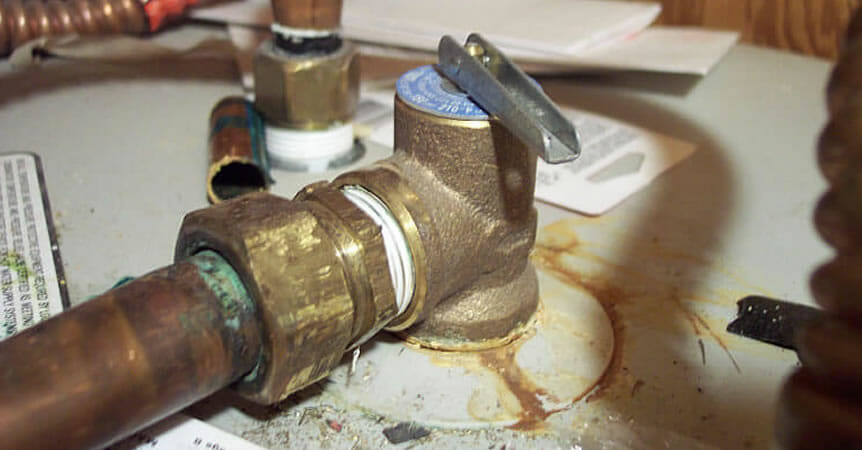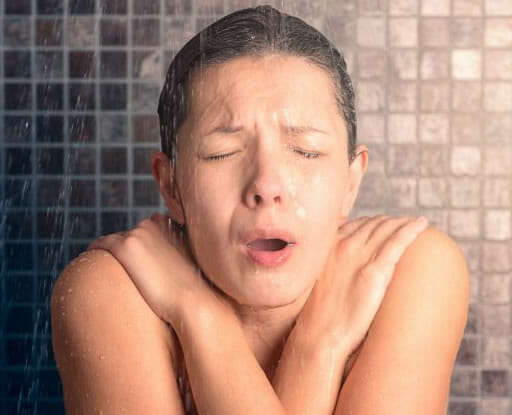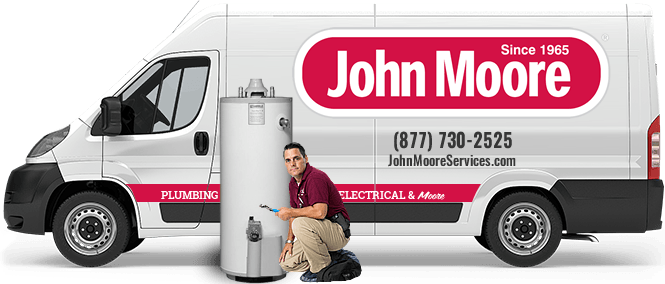
Common Causes of Hot Water Issues How to Solve Them
Common Causes of Hot Water Issues & How to Solve Them
Most hot water problems start at the source: your home’s water heater, So, if you’re having trouble with lukewarm or cold water creeping through your pipes, it’s time to troubleshoot your hot water heater.
Why Won't My Hot Water Get Hot?
There are a few reasons why your water heater may not be properly heating your water supply. Some of these causes you may be able to fix yourself, but others will require help from a licensed professionals plumber.
1. Water Heater Thermostat Is Set Too Low
Much like your home’s AC system, your water heater also has a thermostat that regulates water temperature. Your water heater will only heat water to the temperature set on its thermostat, so make sure it isn’t set too low.
What is the ideal temperature setting for a hot water heater?
A safe temperature setting is within the range 110 and 120 degrees fahrenheit. If your water heater’s thermostat is set below 110℉, your hot water problem may simply be that your water heater doesn’t know it needs to generate hotter water! If you have children in your home, be careful when setting your water heater to 120℉. Always check that the water isn’t too hot when bathing your children. John Moore highly recommends that you do not set your water heater’s thermostat above 120℉ to prevent scalding and other burns.
2. Sediment Build Up in the Water Tank
Now, some folks using tankless water heaters have no need to worry about sediment, but if you have a hot water tank standing in the corner of their utility closet, garage, or in the kitchen, sediment build up may be the cause of your hot water problems. All water that runs through the pipes in your home carries some trace of sediment (this is one reason why John Moore offers whole-home water filtration systems water softeners to filter your water before you drink it). Over time, sediment will settle and build up at the the bottom of your water tank, and it can become so dense that it winds up absorbing the heat generated from the internal heating element. Sediment build up will eventually prevent the water in the tank from reaching the temperature set on the thermostat, causing cold streams of water to flow through your faucets.
3. Broken Dip Tube
Some water heaters (mostly ones made before 1997) use a dip tube. The function of a water heater dip tube is to circulate the cool water streaming into the top of the water tank down to the bottom where it is heated then channeled out into your home’s hot water pipes. If the dip tube mechanism is broken, you may have cool water coming straight in and going straight out of your water heater without passing through the area where the heating occurs.
4. Faulty Thermocouple
For homeowners with gas-powered water heaters, the thermocouple is a safety feature built into the pilot light of the water heater. If broken, the thermocouple will restrict the functionality of the pilot light and either cause the pilot light to repeatedly go out, or it will prevent it from staying on. The pilot light burns gas to supply heat the your water heater’s heating element, so you won’t get hot water if the pilot light is inhibited by a faulty thermocouple.
5. Broken Heating Element
Water heaters are normally guaranteed to keep hot water flowing through your home for at least ten years. After those ten years, parts of the water heater can wear out and fail. With regular annual water heater maintenance, many homeowners can extend the life of their water heaters, though if you have a water heater that’s ten years or older, it’s possible that the heating element has broken, preventing the water in the tank from heating.
6. Water Heater is Too Small for Household
Does it seem like you never have enough hot water? Does your water turn lukewarm five minutes into a shower? Is your laundry cold and wrinkled when you remove it from the washing machine? The tank in your water heater holds a certain amount of water, and only that amount of water can be heated at a time, so if it seems like you are constantly in short supply of hot water, it’s possible that your water heater is too small for your household. For example, if you have a 30 gallon water heater tank, it’s likely that you won’t run out of hot water if you live alone, but if you have a larger family with children, then it’s safe to say that the additional loads of laundry, more frequent dish washing cycles, and more showers will take place in your home, and the 30 gallon tank size won’t be able to accommodate your household size. Your family will quickly run through the heated water after big sister’s evening shower and a load of dishes after dinner, requiring the other family members to wait for a new batch to tank of water the heat up before having hot water again.
Again, homeowners with tankless water heaters won’t have this problem because tankless water heaters only produce hot water when needed, on demand, with zero lag time. Tankless water heaters save homeowners money because they only heat water as it’s being used, opposed to continuously using energy to keep a tank of water warm throughout the day.
Water Heater Services and Repairs from the Professionals at John Moore
Are you having any of the above issues with your water heater? If so, here are some ways to troubleshoot the various water heater problems that are leaving your household with too little hot water.
- Thermostat Adjustment: If your thermostat is set below 110 degrees fahrenheit and your water doesn’t feel hot enough, you can simply raise the thermostat to a warmer setting yourself. (Don’t go above 120℉!)
- Annual Maintenance and Sediment Flush: Do you suspect that a buildup of sediment is preventing your water from heating? At John Moore, we provide annual water heater flushing services to prevent the dense build up of sediment.
- Part Replacements: If it’s looking like your water heater’s dip tube, thermocouple, or heating element is broken, call the professionals at John Moore. We will replace the broken parts and get your heater running hot again.
- Water Heater Upgrade: Do you have hot water that quickly depletes and becomes cold? Its likely your water heater is just too small to accommodate the hot water needs of your household. At John Moore, we can help you decide what size water heater your household actually needs. Once the right size is determined, our team of licensed plumbers will install your appropriately-sized water heater and provide you with a 13- year warranty on all parts and labor.
We are also more than happy to talk to you about upgrading to an efficient, cost-effective tankless water heater so that you never run out of hot water again. To learn more about how John Moore Services can help you get your water hot again, call us at (713) 730-2525 or contact us online!
Share this Post


